August 20, 2016
As naturalists, what we observe and learn is directly connected to how we look. I spent more than a decade involved in field and laboratory studies of dusky pigmy rattlesnakes (Sistrurus miliarius barbouri), during which time I had the great fortune to observe thousands of these charming little pit vipers in both natural and captive environments. Still, during all that time studying pigmies, I never witnessed a behavior I was able to watch yesterday morning while road-cruising the forest roads of Ocala National Forest.
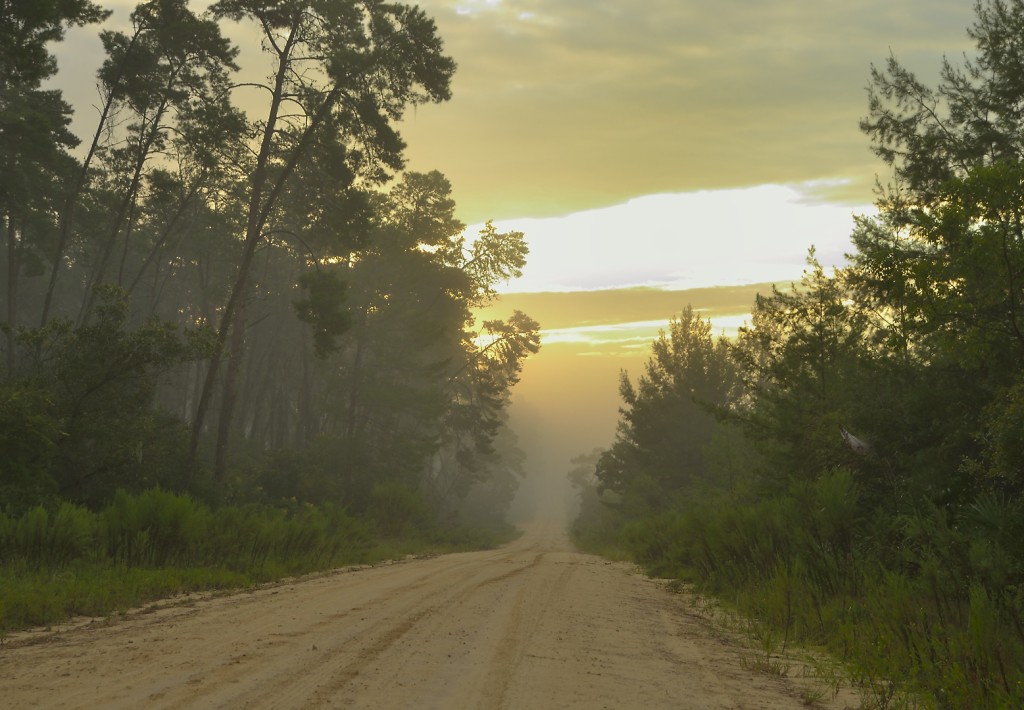
An early morning in the scrub of Ocala National Forest, first spending time with the birds, and later with the snakes. Life is good.
Most of my field observations of pigmies in years past took place during systematic group censuses of our primary study population. A group of dedicated snake searchers moved slowly through the hammock habitat, looking for the sometimes abundant pigmies, most of which were individually marked as part of a long-term mark-recapture study. The premium was on finding as many snakes as possible during the census, and measuring characteristics of the found snakes, such as location, substrate, length, weight, and so on. The upside of this approach is you get to see a lot of snakes. The downside is that you don’t get to watch individual snakes very long before you’re on to the next one.
Not that watching individual snakes is a very productive use of time, in general. Pigmy rattlesnakes normally don’t do much most of the time. They are classic ambush predators, and will sometimes remain in a foraging coil without moving for days at a time. The majority of snakes found are coiled and waiting for some unsuspecting frog or lizard to foolishly venture within striking range. The frequency of pigmy rattlesnake movement varies seasonally; in winter and summer months, only 5-10% of snakes found are moving (May et al., 1996). The remaining 90-95% are in foraging coils. The proportion of moving snakes rises to as high as 15% in spring and fall, but at any time of year, most of the snakes that are out and about (as opposed to sheltering under cover) are immobile. So watching a foraging pigmy rattlesnake is, for the most part, a lot like watching paint dry. Observing the snakes that were moving when first seen isn’t much more productive; they are nearly always aware of the human observer’s presence, and when they resume movement, their goal is mostly to get to cover and out of sight.
Yesterday morning began not long after sunrise, as I started the first day of data collection for my sabbatical research. The focus of this study is bird behavior, and in particular the effectiveness of different auditory cues in eliciting mobbing responses of passerine birds. Snakes were not the furthest thing from my mind (they rarely are), but I wasn’t thinking as much about snakes as I was about birds. A couple of hours of playback trials occupied me for the early part of the morning, and produced a few cool birds – lots of northern parulas, several prairie and yellow-throated warblers, a couple of FOS ovenbirds, and at least a half-dozen summer tanagers. In addition to the neotropical migrants, year-round residents were in evidence everywhere – lots of Florida scrub jays, including many scruffy gray-headed youngsters, tons of towhees, and frequently heard, infrequently seen white-eyed vireos. By 9:45 or so it was hot enough that bird activity was on the wane, so I gave up the structured protocol of research and switched to random road-cruising fun.
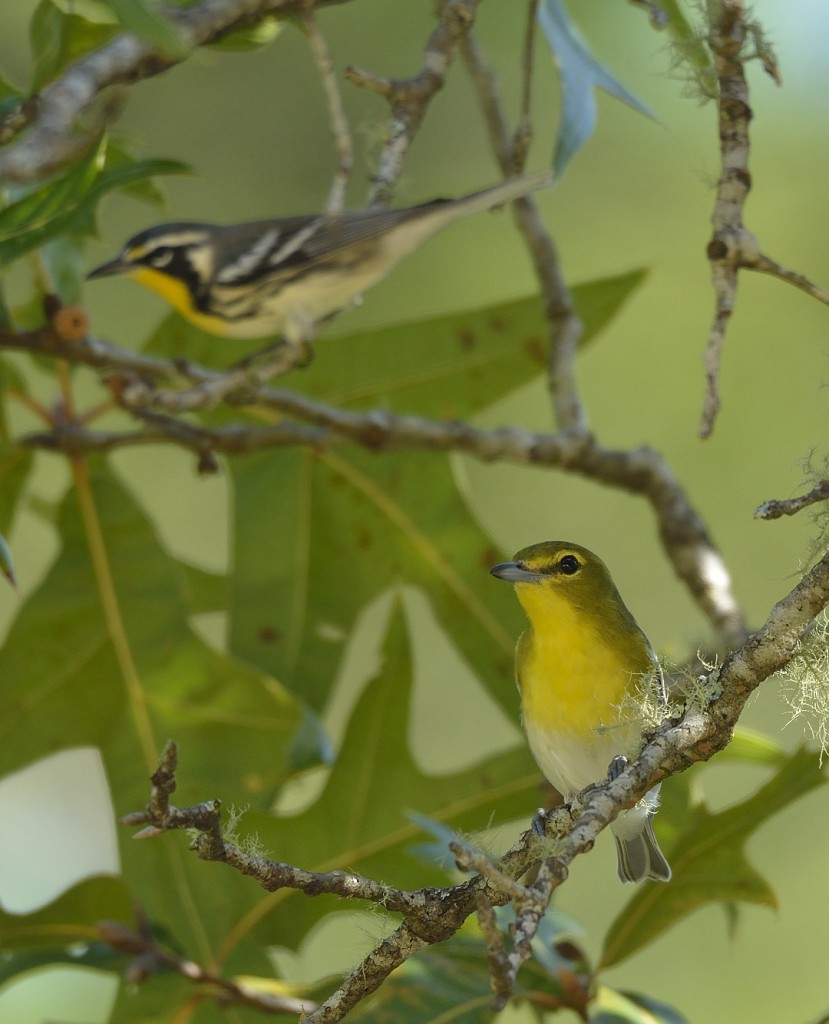
Yellow-throated vireo and yellow-throated warbler, traveling together in the scrub. Mixed-species flocks consisting of up to a dozen species are the basic functional unit of mobbing behavior.
A couple of distant, rapidly moving black racers were the only snakes I found crossing Forest Road 33; at about 10:30 I headed east on FR 46 towards its intersection with SR19, and then home. It was warm enough I didn’t expect to see much bird or other wildlife activity, but I was ready to be pleasantly surprised. I saw a bear on this road around mid-day last fall, so anything is possible.
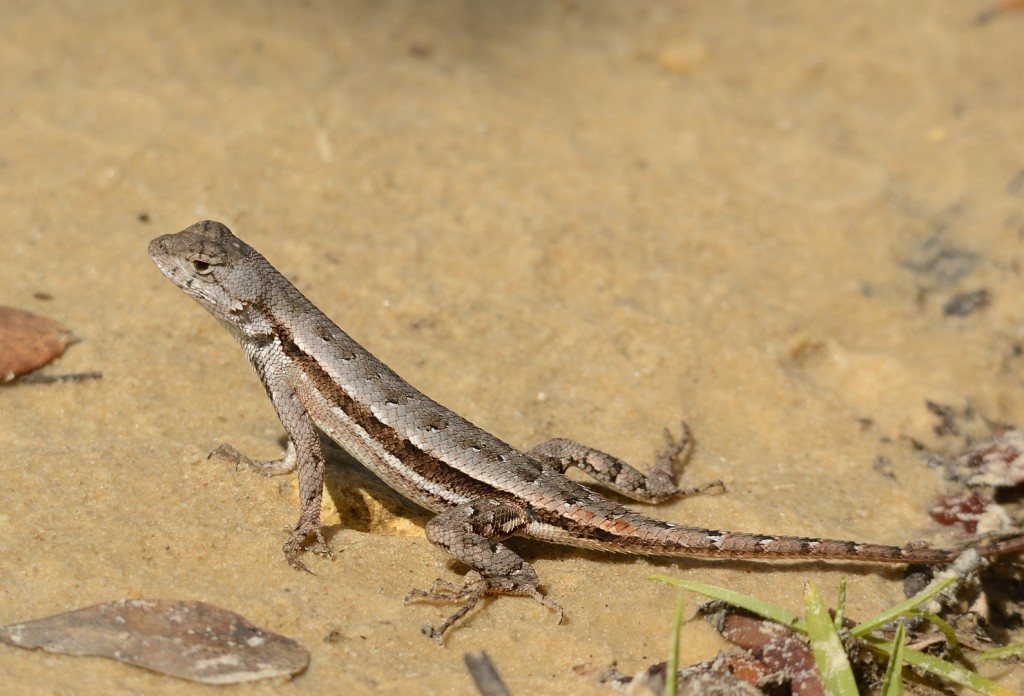
A scrub lizard, Sceloporus woodi, led me to the baby pigmy, much like the African honeyguide leads people to beehives.
I slowed a bit at the Pat’s Island Trailhead parking lot, and when I did so, I saw a lizard dart from the soft sand at the road’s edge towards cover. He stopped briefly in the open, and I maneuvered my big lens into position to scan the ground for the saurian. I found him, briefly, before he retreated fully into cover and out of sight. It was a male scrub lizard (Sceloporus woodi), a Florida endemic that, though locally abundant, always gets me a little hyped when I get the chance to photograph one. Which this guy refused to give me. But while scanning the ground for the cryptic scelop, I saw something else I would have completely missed with a naked eye view – a neonate pigmy rattlesnake stretched out on the sand and debris. The small size and bright yellow tail identified it as a YOY – a young-of-the-year snake that was almost certainly less than a month old, perhaps no more than a few days old. It still had only the original button that rattlesnakes are born with, meaning it had shed its skin only once (the post-natal shed, which comes 2-4 days after birth and leaves the snake with a single rattle segment). His second shed would add the first interlocking rattle segment below the button, and and would allow this snake to actually rattle, sort of, if it chose to. Which they rarely do. Pigmy rattlesnakes are kind of an embarrassment to the whole notion of rattling.
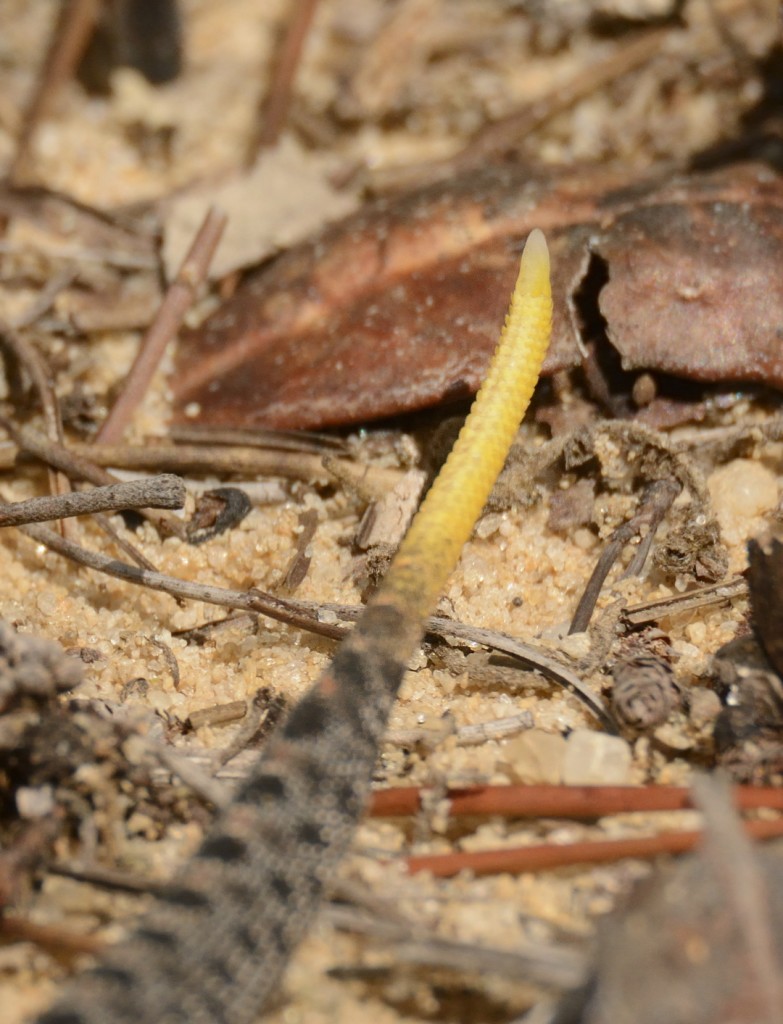
The “rattle” of my baby rattler. No moving parts – he couldn’t rattle if he wanted to. Which he didn’t.
As is typical of pigmies that are detected by a big stinking primate while they are moving, this one had frozen into complete immobility. Such snakes are acutely aware of the sweaty mammal, and usually will remain static and somewhat cryptic for a minute or three; at some point, they apparently decide (?) that the threat is diminished and gone, and they slowly crawl to cover. But this one didn’t do that.
Instead, it began poking its head around the palm frond debris nearby, tongue-flicking occasionally. After a couple of minutes of exploratory behavior, he slowly formed his body into a foraging coil. This process took several minutes, and was completed as the little snake rocked his body back and forth a few times to settle down into the sand. It was of interest to me that when the coil was complete, the yellow-tipped tail wasn’t particularly prominent. Young pigmy rattlesnakes sometimes use their brightly colored tail tip to mimic a small caterpillar or insect larva, wiggling it when frogs or lizards are nearby to entice them into taking a bite. If all works according to plan, the pigmy then takes his bite. The behavior is called caudal luring; the baby pigmy I was watching wasn’t doing it.

The final result. Notice that the yellow tail is barely visible from the direction the snake is facing.
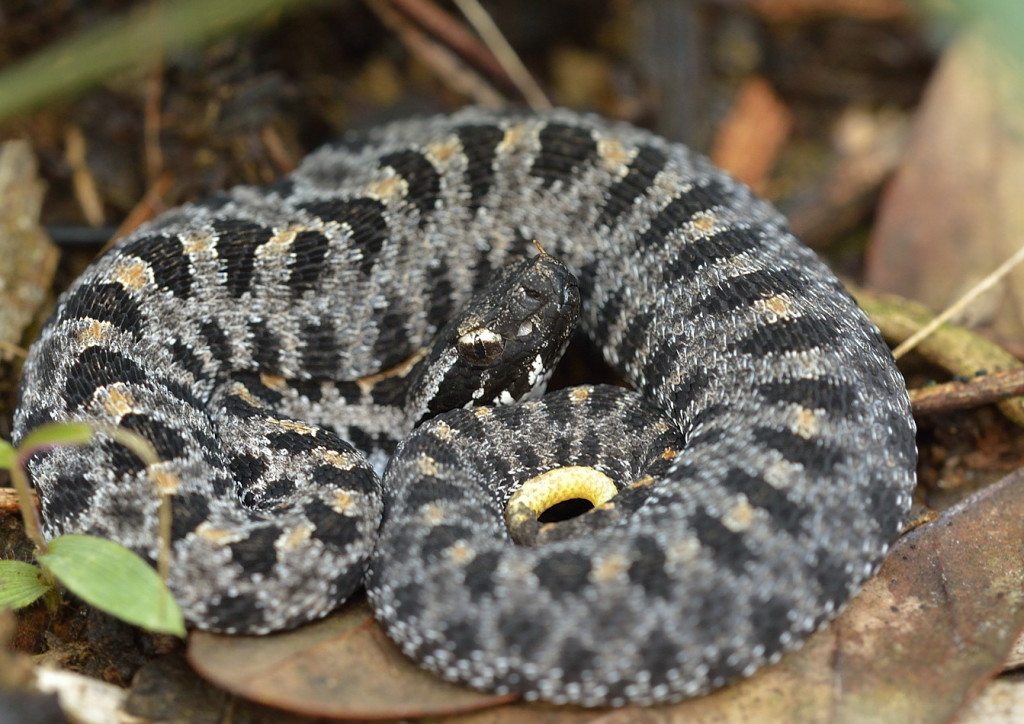
A neonate pigmy rattlesnake from Lake Woodruff NWR in a foraging coil, showing a bit of the yellow tail.
So at this point I figured the excitement (!) was over. The baby pig was settled into its foraging coil, and might not move for hours or days. Still I hung around and watched. I was hoping the scrub lizard might make a reappearance, but didn’t really expect any other action from the pigmy. Still, I was pretty happy with what I’d seen so far. In all the years of watching pigmy rattlesnakes in the field, I had never observed one actually form a foraging coil while I watched. The tongue-flicking prior to coiling suggest that chemical cues may be an important part of site selection. Eric Roth showed over a decade ago while working on the pigmy research project that pigmies are more likely to coil and hunt in areas that have been sprayed with frog scent than in nearby similar areas lacking frog odors (Roth et al., 1999).
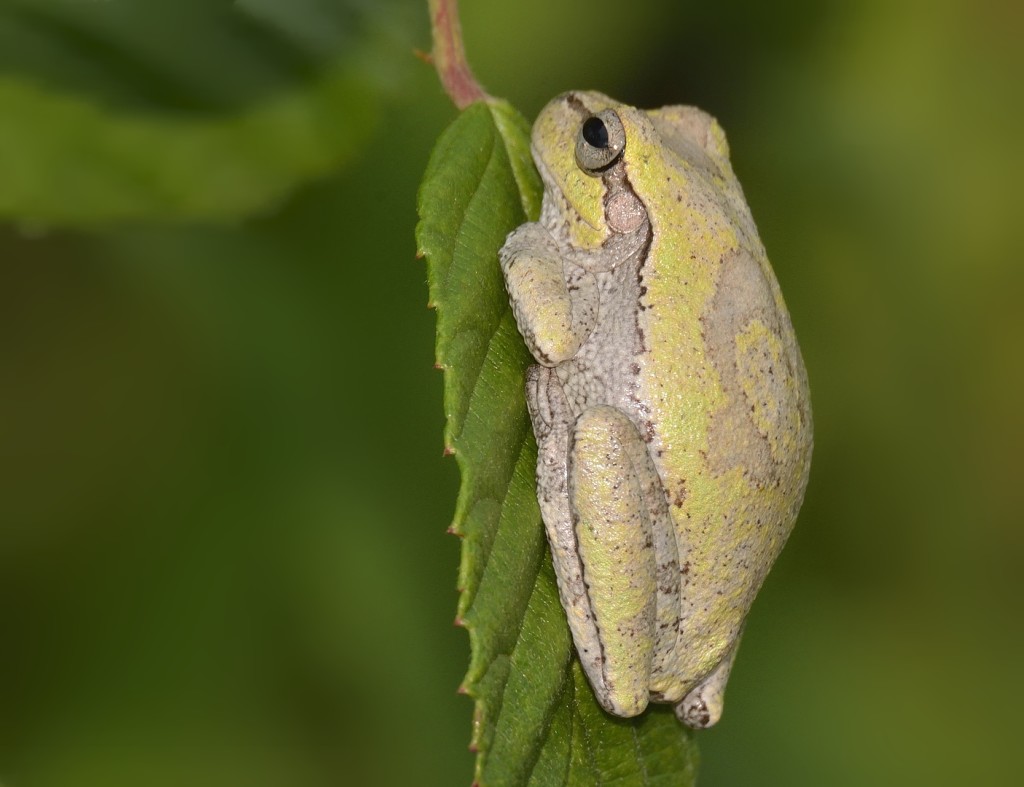
Pigmy rattlesnakes in some habitats eat a lot of frogs, including both semi-aquatic frogs (leopard frogs, especially) and tree frogs. This a pinewoods tree frog, Hyla femoralis.
I was quite surprised when the little viper began moving his head back and forth a bit, and tongue-flicking. He had been in his coil for less than 5 minutes. When he initially coiled, the spot was in shade, but a moving sun fleck was beginning to encroach on his foraging site. That particular foraging spot would be completely untenable if exposed to full mid-morning sun; the little pigmy would be overheated within minutes.
So the little dude did a very reasonable thing – he switched spots. But not very far. He slowly crawled to a still shaded spot less than a foot away, and repeated the behavior. He began nosing at and tongue-flicking around a small twig, and soon settled into a foraging coil situated partially under the stick. The process of forming a coil was much quicker this time. Time stamps from the series of photographs I took reveal that it took him several minutes to form the first coil, but only a little over a minute for the latter.He was still in his second coil when I drove away, but I doubt he stayed there long either. The entire area was soon to be exposed to direct full sun, which would surely require that he relocate again.
Was this baby snake learning how to choose a foraging site? Snakes as a group have never been considered by most biologists to be particularly “intelligent”, whatever that term means. The general view of comparative intelligence among the vertebrates has long been that while birds and mammals are highly intelligent and capable of complex cognitive feats (“learning animals”), the ectothermic vertebrates (fish, amphibians, reptiles) are primarily “reflex animals”, relying mostly on hard-wired, fixed behaviors to respond to environmental challenges. My personal view is that we probably underestimate the cognitive capabilities of most animals. There’s shit going on there we have very limited means of studying and understanding.
From a purely practical standpoint, it seems reasonable that young pigmy rattlesnakes should learn how to choose better foraging sites as they get older. A successful foraging site, particularly one that results in capture and consumption of a prey item, should provide positive reinforcement regarding the characteristics of that foraging site, and the site-selection behavior of that individual should be modified. Actually demonstrating learning by individual animals is a tough nut, though, especially in the field. For learning to have occurred, the snake would have to modify some aspect of its site selection behavior as a result of earlier experiences.
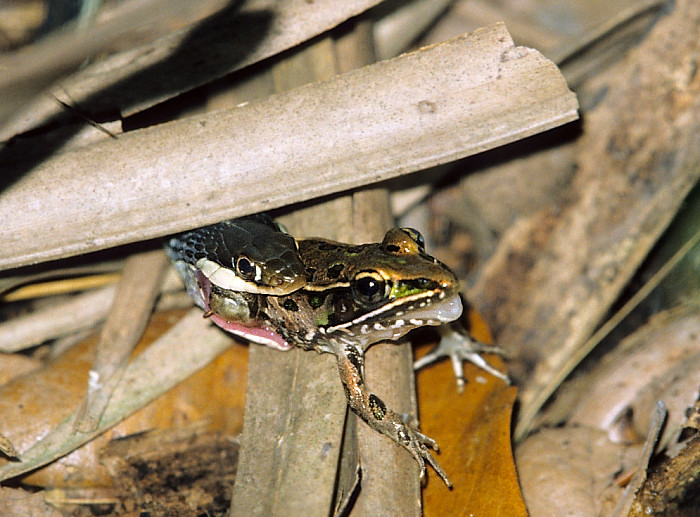
Snakes in the genus Thamnophis (garter and ribbon snakes) have been shown in laboratory studies to learn how to better track prey. This is a peninsula ribbon snake (Thamnophis sauritus sackeni) trying to hang on to an uncooperative leopard frog. Scanned from a transparency.
Demonstrating learning in non-human animals requires controlled conditions and laboratory studies. A quick and dirty Google Scholar search for primary literature on learning in snakes turns up only a handful of citations, some of which show limited modification of behavior based on experience, and others that don’t. Garter snake babies become better at following worm trails with experience, but Richard Shine and his colleagues have shown that Australian black snakes (Pseudechis porphyriacus) don’t learn to avoid toxic cane toads (a novel, non-native prey for these snakes) after encountering them. However, populations exposed to the toads rapidly evolved behavioral avoidance of cane toads, compared to populations with no previous exposure to the toads (Phillips and Shine, 2006). The naïve snakes readily consumed the toads, much to their detriment. This result suggests that toad avoidance in these snakes is an evolved, genetically based behavior.
It would be an extremely premature and foolhardy conclusion to state with any confidence that I had observed a snake learning. None the less, I’m pretty sure that’s what I did.
References
May, P.G., Farrell, T.M., Heulett, S.T., Pilgrim, M.A., Bishop, L.A., Spence, D.J., Rabatsky, A.M., Campbell, M.G., Aycrigg, A.D. and Richardson, W.E., (1996). Seasonal abundance and activity of a rattlesnake (Sistrurus miliarius barbouri) in central Florida. Copeia, pp.389-401.
Roth, E., May, P., & Farrell, T. (1999). Pigmy Rattlesnakes Use Frog-Derived Chemical Cues to Select Foraging Sites. Copeia, 1999(3), 772-774.
Phillips, B. L., & Shine, R. (2006). An invasive species induces rapid adaptive change in a native predator: cane toads and black snakes in Australia.Proceedings of the Royal Society of London B: Biological Sciences,273(1593), 1545-1550.
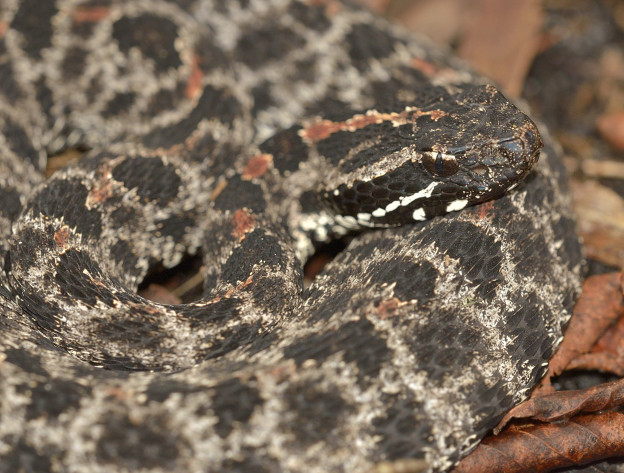
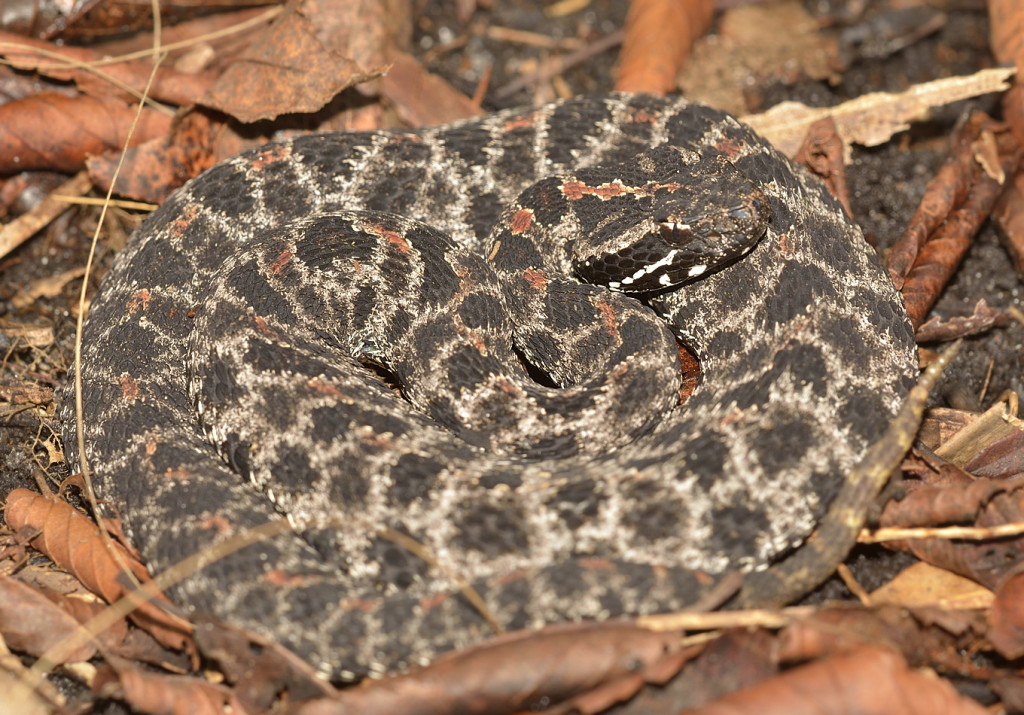
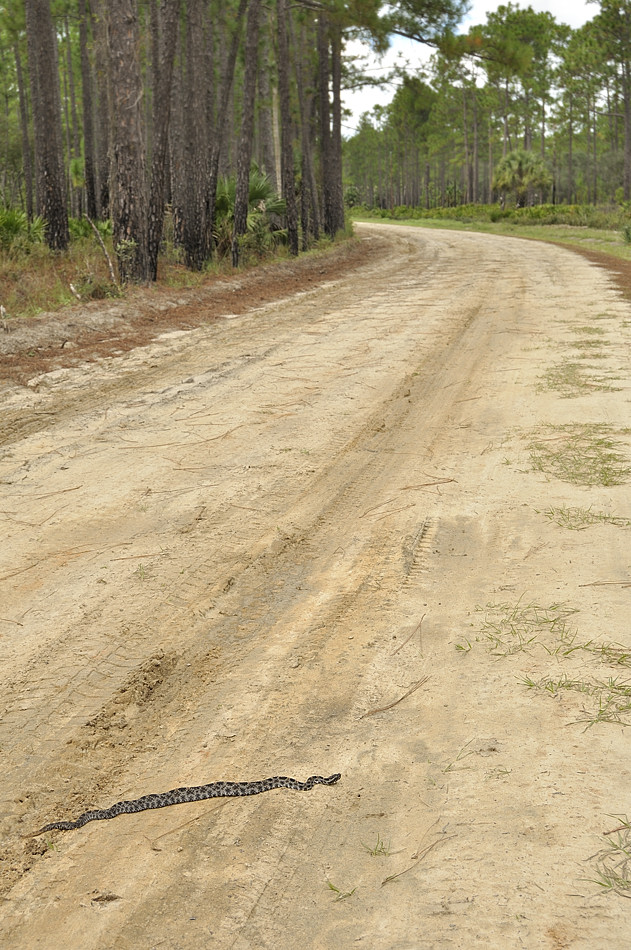
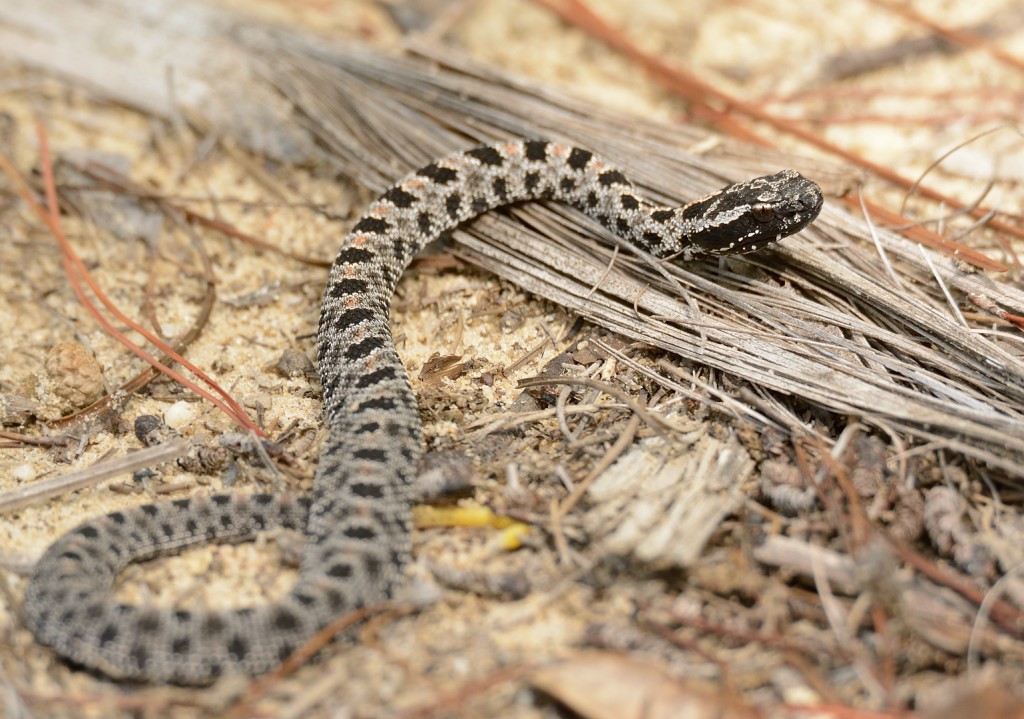
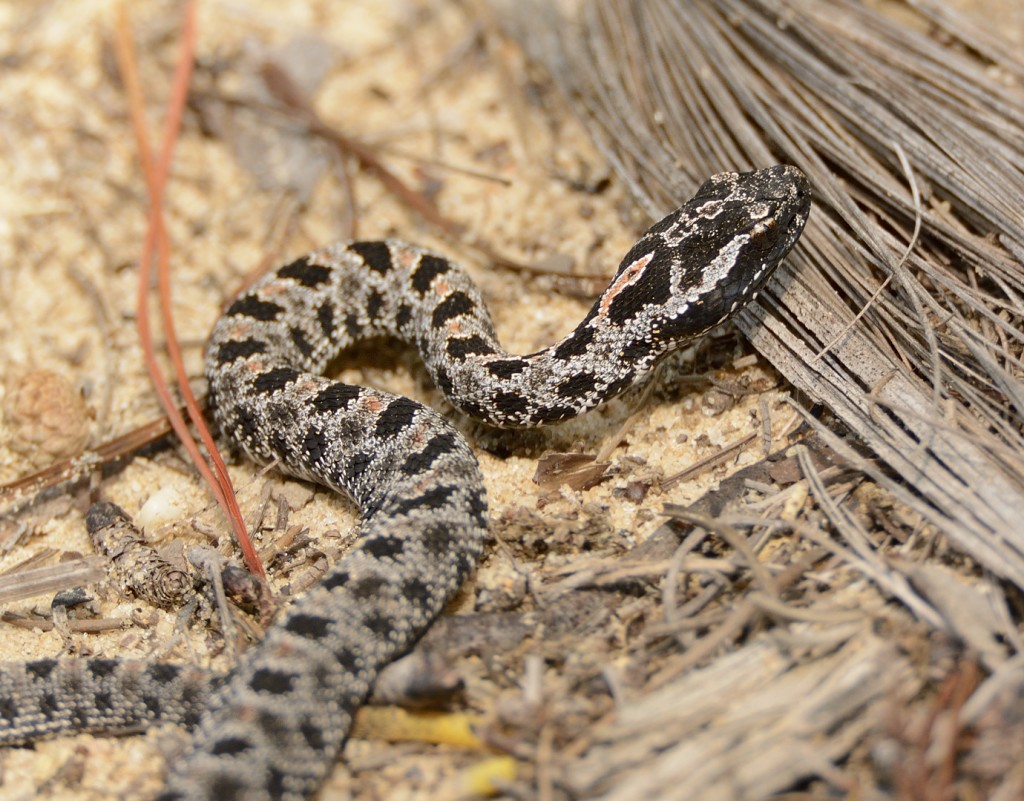
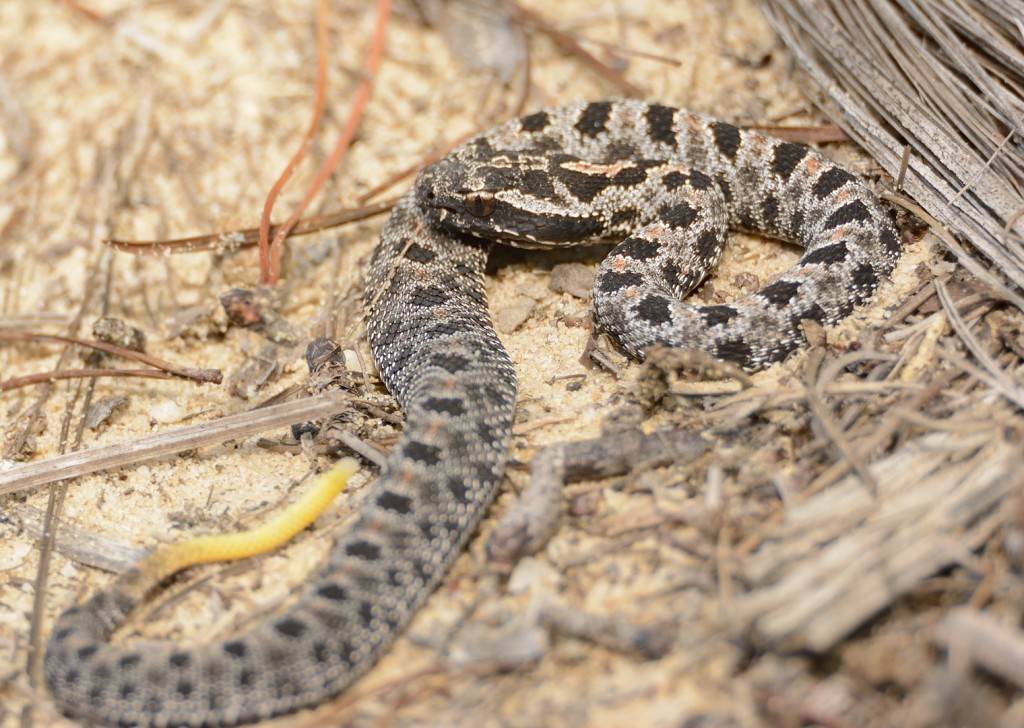
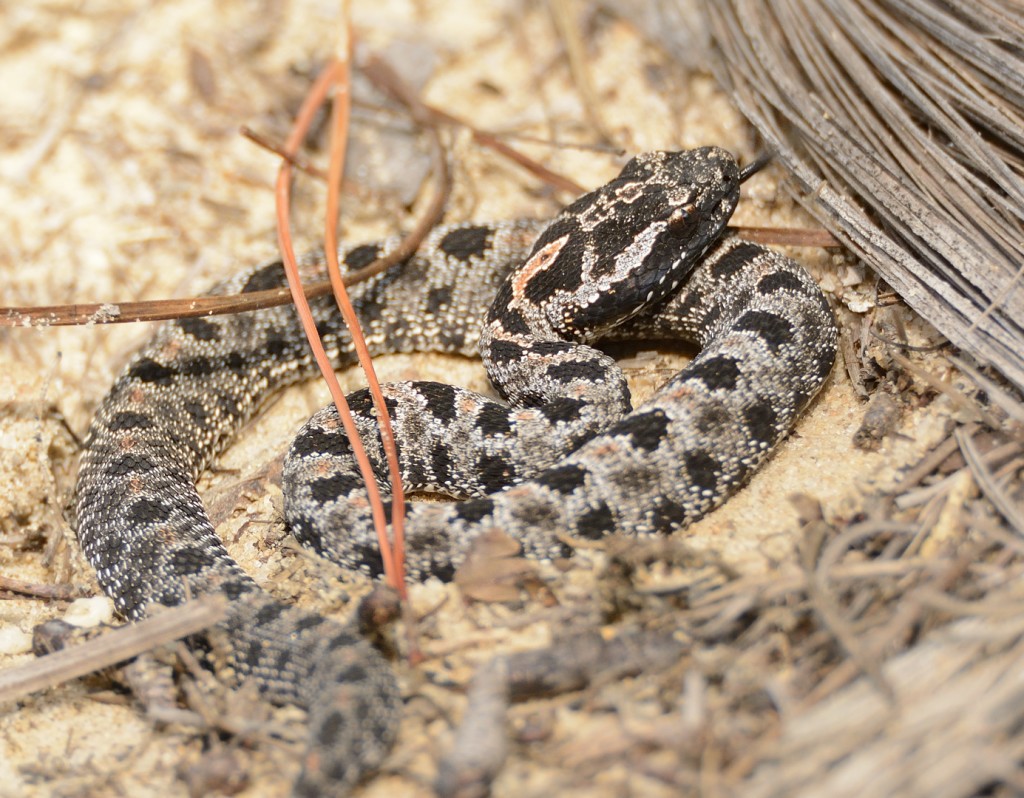
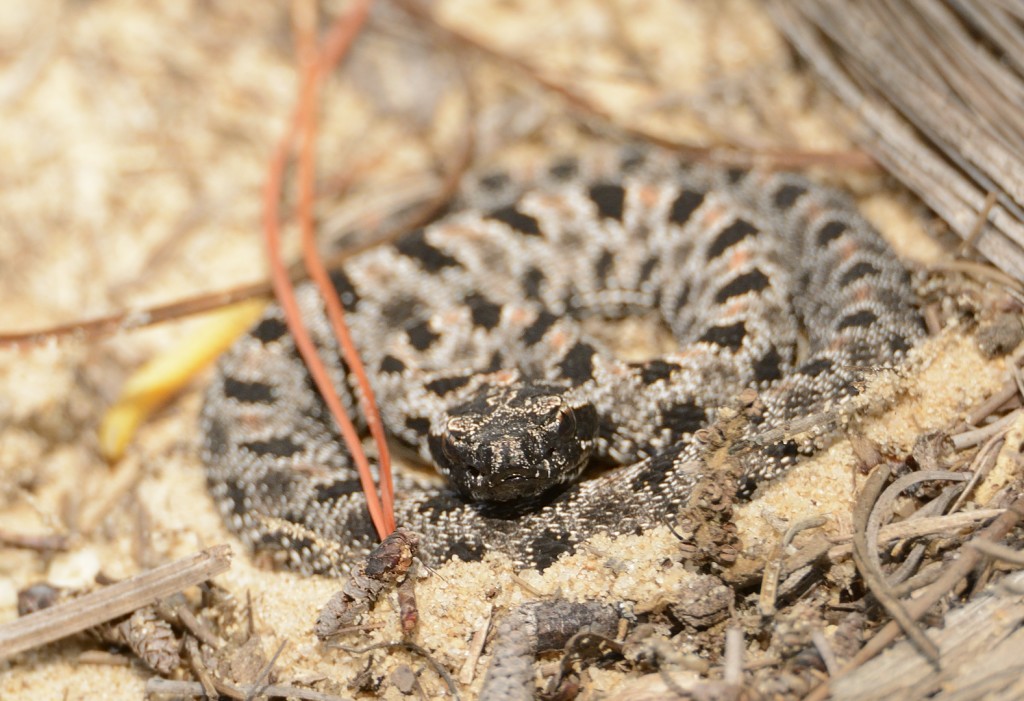
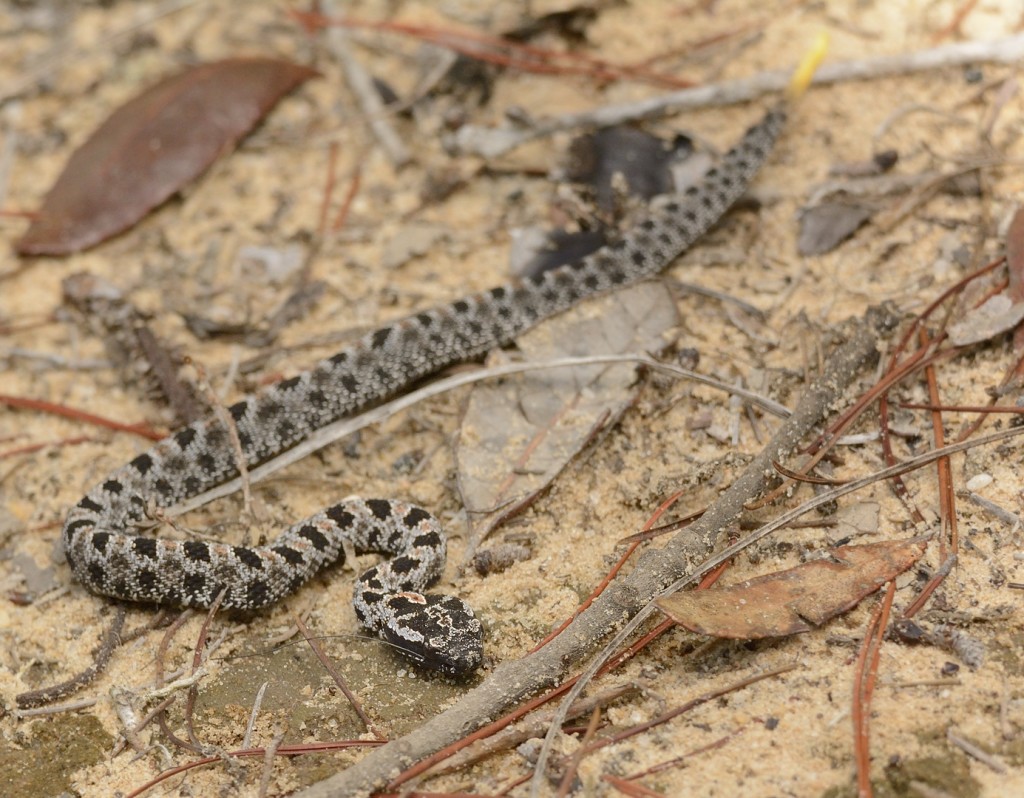
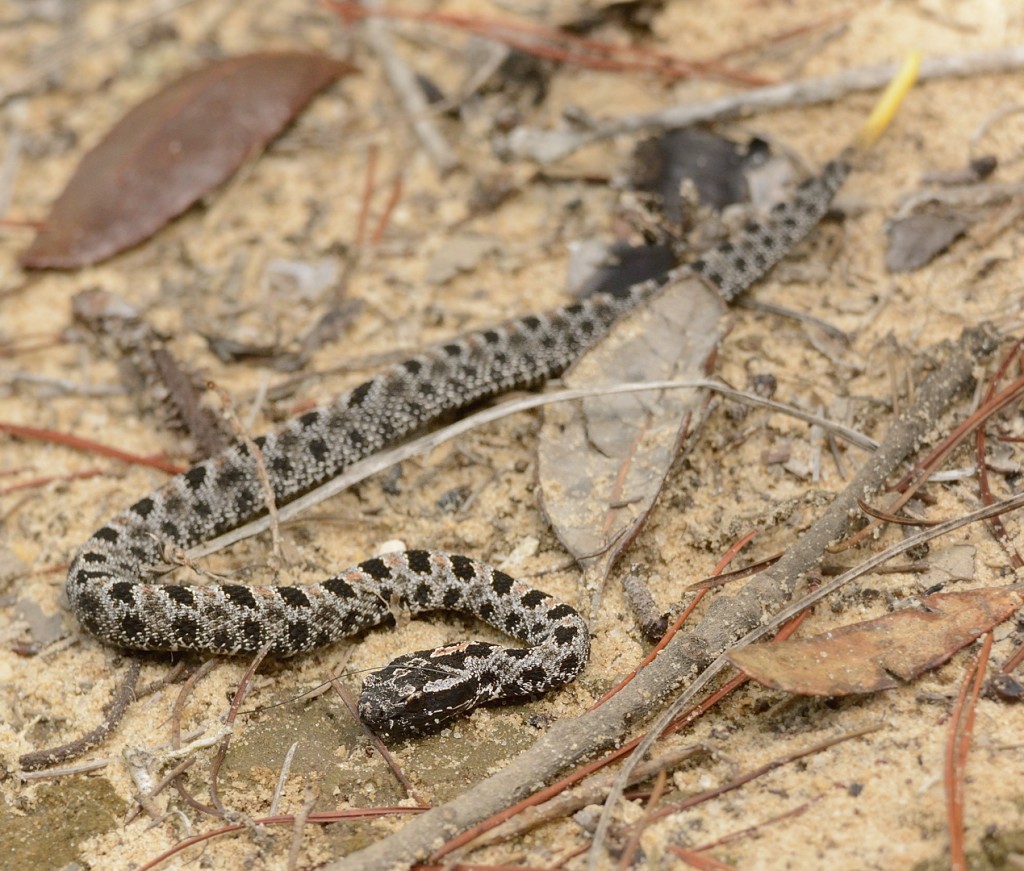
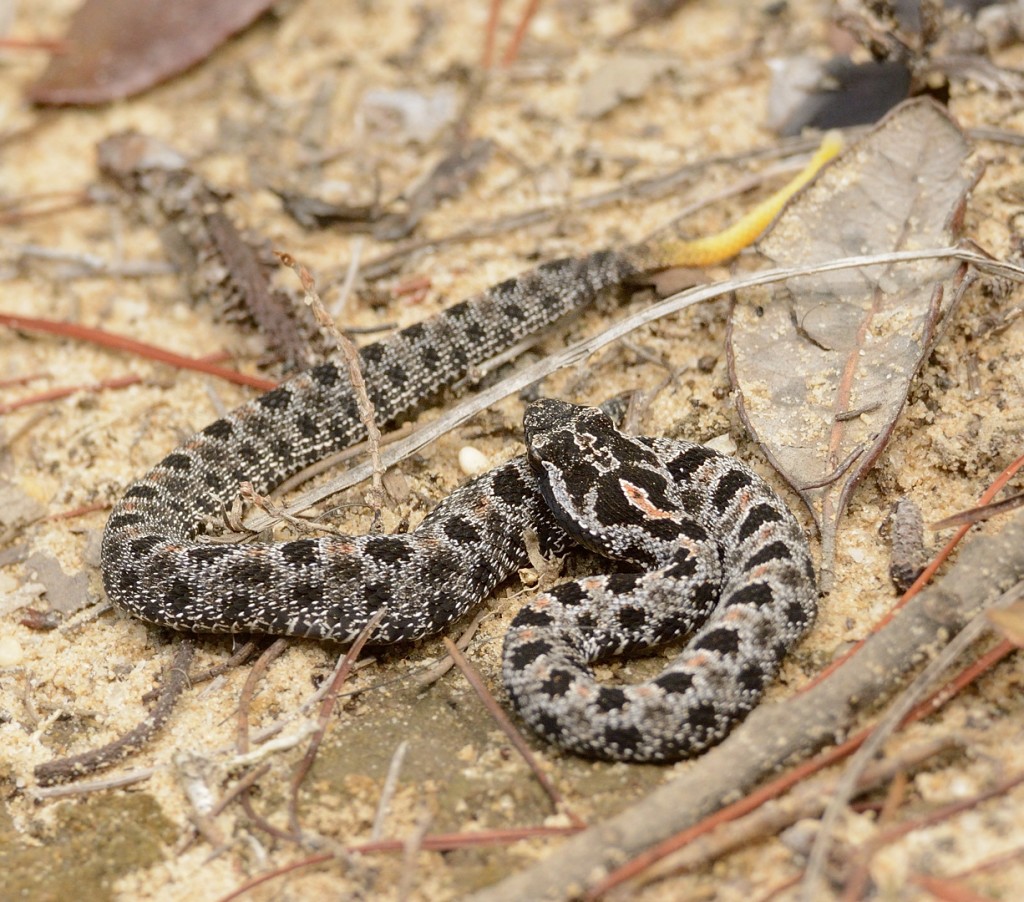
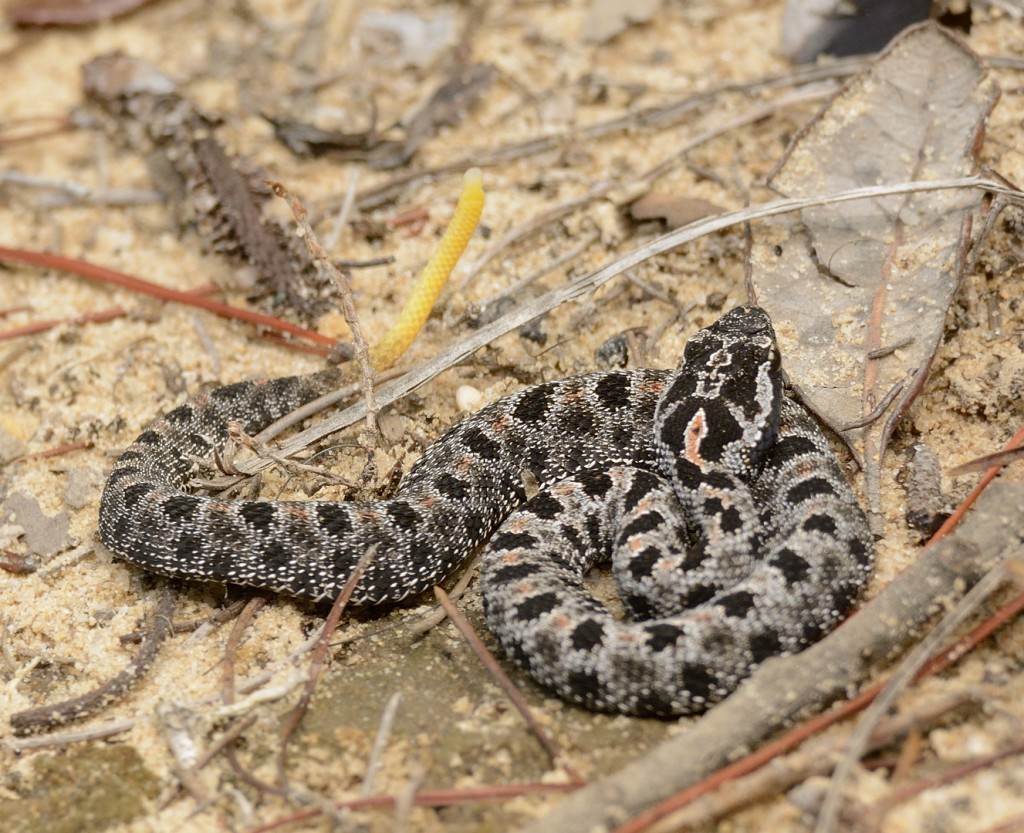
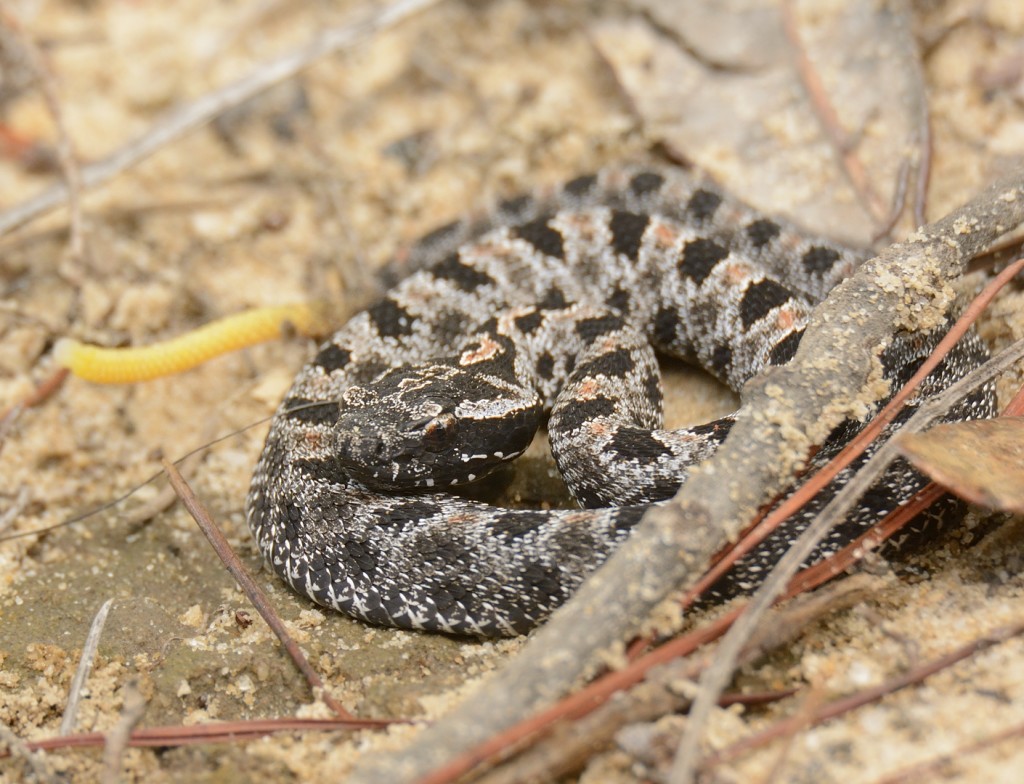
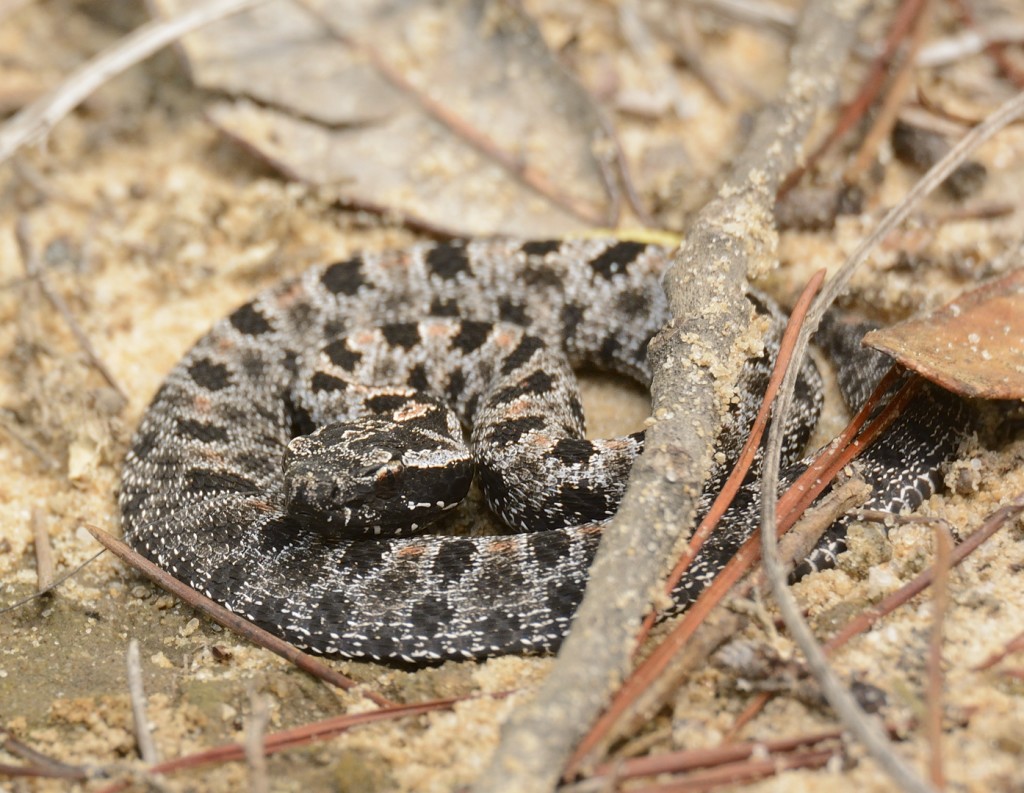
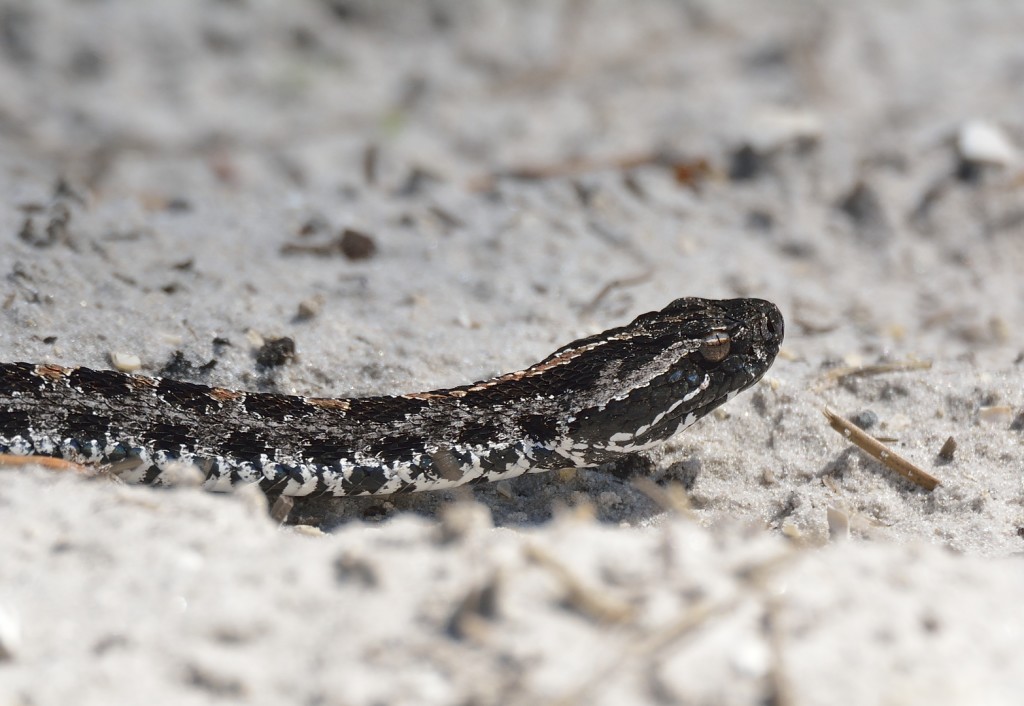
I loved this entry Peter. When we first arrived at Lake Woodruff and people talked about how prevalent these guys were, I was very wary. Until I found my first one, coiled up in (what I now know is called a foraging coil) under a clump of grass, did I realize I had nothing to fear. They are so tiny and so beautifully marked and as you say, rarely move.
Thank you, Carol. Innocuous little snakes, though they have an unearned reputation for being particularly aggressive. They aren’t.
It’s unfortunate that it has taken a sabbatical for another of your articles to appear here, Dr. Pete. You’ve reminded me of my visit to the newly opened Lake Apopka Wildlife Drive. Along one of the roads an unidentified snake was making a very rapid slithering movement from left to right. I was certain that I had run over it with the car even after making every effort to avoid it. After stopping to investigate, the snake was fortunately not seen and hopefully able to continue its behavior another day. As I anticipate walking the scrubs of the Southwest US in the future, what simple guidance and recommendations might you have to ensure the safety of myself and the snakes?
Watch where you step, Bob. The vast majority of venomous snake bites are what the professionals call “illegitimate”, meaning the bitee somehow elicited the strike by handling or threatening the snake. Wear snake boots or leggings if you’re really worried, but the chance of snake bite in any habitat is vanishingly small.
It’s wonderful articles such as yours which make me regret not pursuing a career in science. Sigh.
Thank you for a really interesting post, superb photographs and a reminder that I simply must try to be more observant (and patient). Birds are cool but there is just SO MUCH to experience!
Thanks, Wally